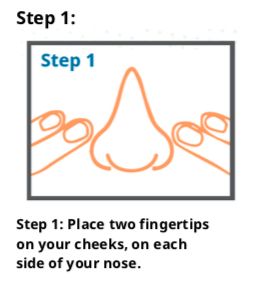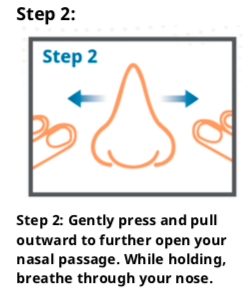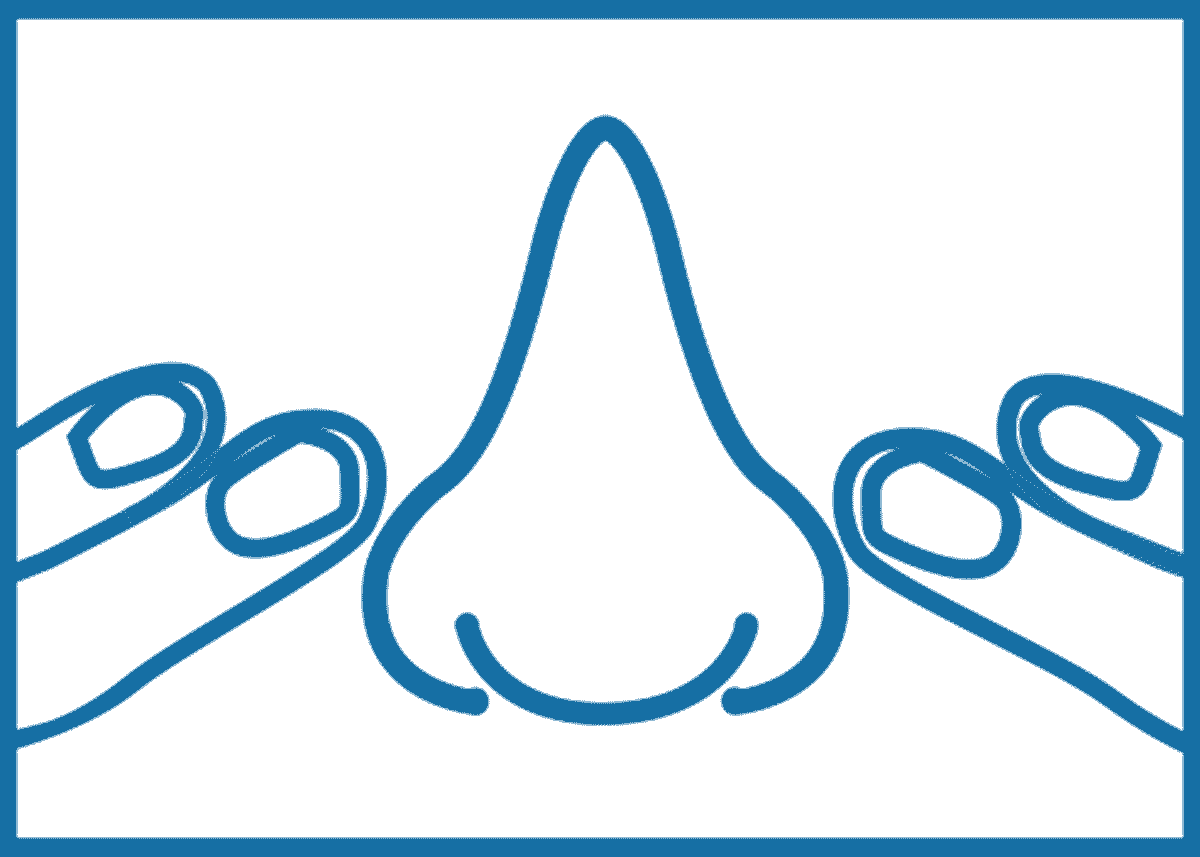Are you addicted to nasal spray? Can't breathe without it?
Ever dream of how wonderful it would be to breathe freely again? Nasal obstructions and blockages are common and can be remedied. Start with a painless exam by Dr. Grillo, who is a Board Certified ear, nose and throat physician. After your exam he will suggest different treatments for your sinus condition.
What is nasal obstruction?
Many people with nasal obstruction experience difficulty breathing through their nose, habitual snoring, interrupted sleep and fatigue.
Nasal obstruction is often caused by an anatomical blockage in the nose, hindering airflow. As a result, you may feel congested or “stuffy”. Home remedies and medications may offer temporary relief. It’s only when your nasal airway is opened that you can expect to feel real, lasting relief.
Common symptoms of nasal obstruction:
- Trouble breathing through your nose
- Nasal congestion
- Difficulty sleeping
- Difficulty breathing during physical exertion
VivAer® Procedure
Lasting relief is possible without surgery (or incisions)
If you regularly experience difficulty breathing through your nose and nothing seems to help, you may have nasal obstruction. Until now, finding a long-term solution often meant surgery. Now, your physician may be able to offer you lasting relief without surgery (or incisions) by performing the VivAer® procedure to open your nasal airway.
- Lasting Relief: 97% of patients experienced significant improvement in nasal breathing.
- No Incisions: Minimal discomfort, no incisions and can be performed in your doctor’s office.
- Live better: Clinically shown to significantly improve quality of life and provide long-lasting relief.
Click here to see if you are a candidate for the VivAer® Procedure.
You can also perform this simple test, called the Cottle’s maneuver to see if you may be a candidate.



Did the Cottle’s maneuver help you breathe better? If so, you may be a candidate! Schedule an appointment to be evaluated.
CONTACT US TODAY TO SCHEDULE AN APPOINTMENT
Sinusitis
Sinusitis means your sinuses are infected or inflamed. Your sinuses are hollow air spaces within the bones surrounding the nose. They produce mucus, which drains into the nose. If your nose is swollen, this can block the sinuses and cause pain and infection. Sinusitis can be called "acute" when lasting for less than four weeks, or "chronic" when lasting much longer. Acute sinusitis often starts as a cold, which then turns into a bacterial infection. Allergies, pollutants, nasal problems and certain diseases can also cause sinusitis. Symptoms of sinusitis can include fever, weakness, fatigue, cough and congestion. There may also be mucus drainage in the back of the throat, called postnasal drip. Treatments include antibiotics, decongestants and pain relievers. Using heat pads on the inflamed area, saline nasal sprays and vaporizers can also help.
Now there is a breakthrough treatment for patients who suffer from this condition and are tired of having to be on antibiotics, decongestants and pain relievers.
Balloon Sinuplasty™
Balloon Sinuplasty™ technology is an endscopic, catheter-based system for patients suffering from sinusitis. The FDA-cleared technology uses a small, flexible sinus balloon catheter to open up blocked sinus passageways, restoring normal sinus drainage. When the sinus balloon is inflated, it gently restructures and widens the walls of the passageway while maintaining the integrity of the sinus lining.
Read more information about this new technology and watch a detailed video here.
Nose (Nasal) Disorders
Whether it's large or small, your nose is important to your health. It filters the air you breathe, removing dust, germs and irritants. It warms and moistens the air to keep your lungs and the tubes that lead to them from drying out. Your nose also contains the nerve cells that help your sense of smell. When there is a problem with your nose, your whole body can suffer. For example, the stuffy nose of the common cold can make it hard for you to breathe, sleep or get comfortable.
Many problems besides the common cold can affect the nose. They include:
- DEVIATED SEPTUM — A shifting of the wall that divides the nasal cavity into halves.
- TURBINATE HYPERTROPHY — Is due to an enlargement of the turbinates — the small structures within your nose that cleanse and humidify air as it passes through your nostrils into your lungs.
- NASAL POLYPS — Soft growths that develop on the lining of your nose or sinuses.
- NOSEBLEEDS — Nosebleeds are common. Most often they are a nuisance and not a true medical problem. Nosebleeds usually originate from the septum, just inside the nose. Nosebleeds can begin from the septum, but they may also begin deeper in the nose's interior. This latter origin of nosebleed is much less common. It may be caused by hardened arteries or high blood pressure or as a result of blood thinning medications. These nosebleeds begin spontaneously and are often difficult to stop. They require a specialist's help.
- RHINITIS — Inflammation of the nose and sinuses sometimes caused by allergies. The main symptom is a runny nose.